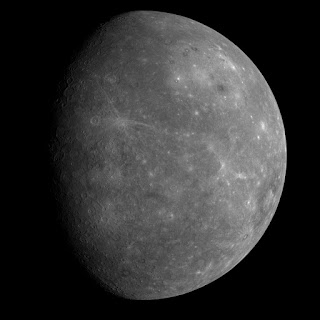Mercury, the innermost planet of our solar system, presents a paradox: despite its proximity to Earth, it remains one of the most challenging planets to explore. Its close orbit to the Sun subjects spacecraft to intense solar gravity and extreme temperatures, making missions to Mercury a formidable endeavor. In this article, we delve into the intricacies of Mercury exploration, highlighting the pioneering missions that have expanded our understanding of this enigmatic planet.
The Challenge of Mercury's Proximity to the Sun
Mercury's orbit lies just 58 million kilometers from the Sun, significantly closer than Earth's 150 million kilometers. This proximity results in a stronger gravitational pull from the Sun, requiring spacecraft to execute complex maneuvers to enter Mercury's orbit without being drawn into the Sun. Additionally, the planet's minimal atmosphere offers no assistance for aerobraking, necessitating precise propulsion techniques to decelerate spacecraft effectively.
Mariner 10: Pioneering Mercury Exploration
In 1973, NASA launched Mariner 10, the first mission to utilize gravitational assist maneuvers, a concept proposed by Italian mathematician Giuseppe "Bepi" Colombo. By performing a flyby of Venus, Mariner 10 adjusted its trajectory to encounter Mercury. Between 1974 and 1975, the spacecraft conducted three flybys, approaching as close as 327 kilometers to Mercury's surface. These encounters allowed Mariner 10 to map approximately 45% of the planet's surface and detect its magnetic field, providing the first close-up images and data of Mercury.
MESSENGER: Unveiling Mercury's Mysteries
After a three-decade hiatus, NASA's MESSENGER (MErcury Surface, Space ENvironment, GEochemistry, and Ranging) mission reignited interest in Mercury. Launched in 2004, MESSENGER employed multiple flybys of Earth, Venus, and Mercury to gradually reduce its velocity before successfully entering Mercury's orbit in 2011. Over its four-year orbital mission, MESSENGER provided comprehensive data on Mercury's geology, magnetic field, and surface composition, revealing the presence of water ice in permanently shadowed craters and mapping the entire planet's surface.
BepiColombo: A Collaborative Mission to Mercury
In 2018, the European Space Agency (ESA) and the Japan Aerospace Exploration Agency (JAXA) launched BepiColombo, a joint mission comprising two orbiters: the Mercury Planetary Orbiter (MPO) and the Mercury Magnetospheric Orbiter (Mio). BepiColombo is currently en route to Mercury, with an expected arrival in December 2025. The mission aims to conduct detailed studies of Mercury's composition, geophysics, atmosphere, and magnetosphere, enhancing our understanding of the planet's formation and evolution.
Innovative Techniques in Mercury Exploration
The missions to Mercury have employed innovative techniques to overcome the planet's challenging environment. Gravitational assist maneuvers, first utilized by Mariner 10, have become a standard method for adjusting spacecraft trajectories. MESSENGER's use of multiple planetary flybys exemplifies the complexity of planning interplanetary missions. BepiColombo's dual-orbiter configuration allows for simultaneous observations of Mercury's surface and magnetosphere, providing a comprehensive understanding of the planet.
Conclusion
Exploring Mercury has been a testament to human ingenuity and the relentless pursuit of knowledge. From Mariner 10's pioneering flybys to MESSENGER's detailed orbital studies and the ongoing BepiColombo mission, each endeavor has built upon the last, unraveling the mysteries of our solar system's innermost planet. As BepiColombo approaches its destination, we anticipate a new era of discoveries that will further illuminate Mercury's enigmatic nature.
This article was brought to you by FreeAstroScience.com, where we simplify complex scientific principles for our readers.
Credit: NASA/Johns Hopkins University Applied Physics Laboratory/Carnegie Institution of Washington.


Post a Comment